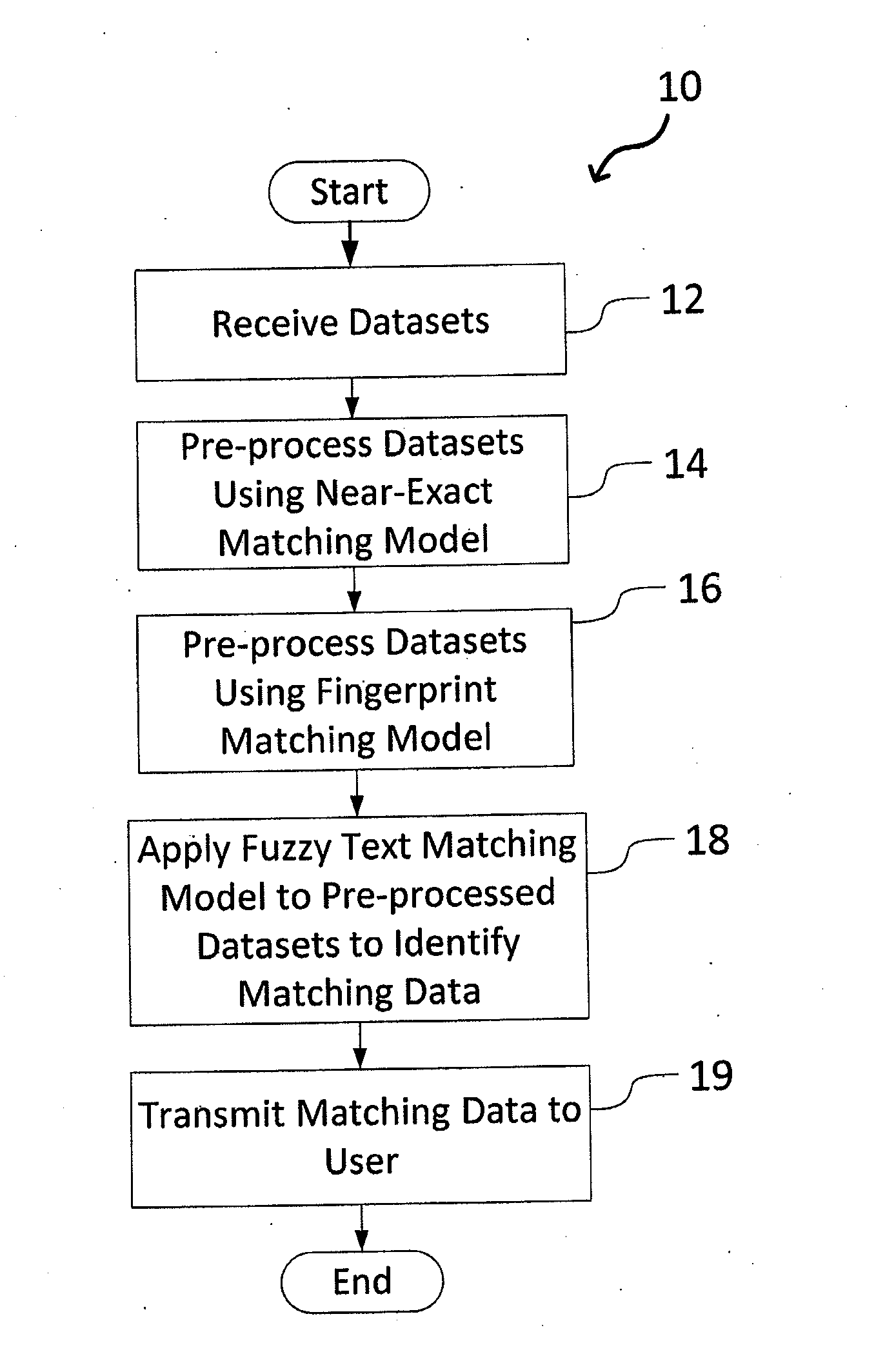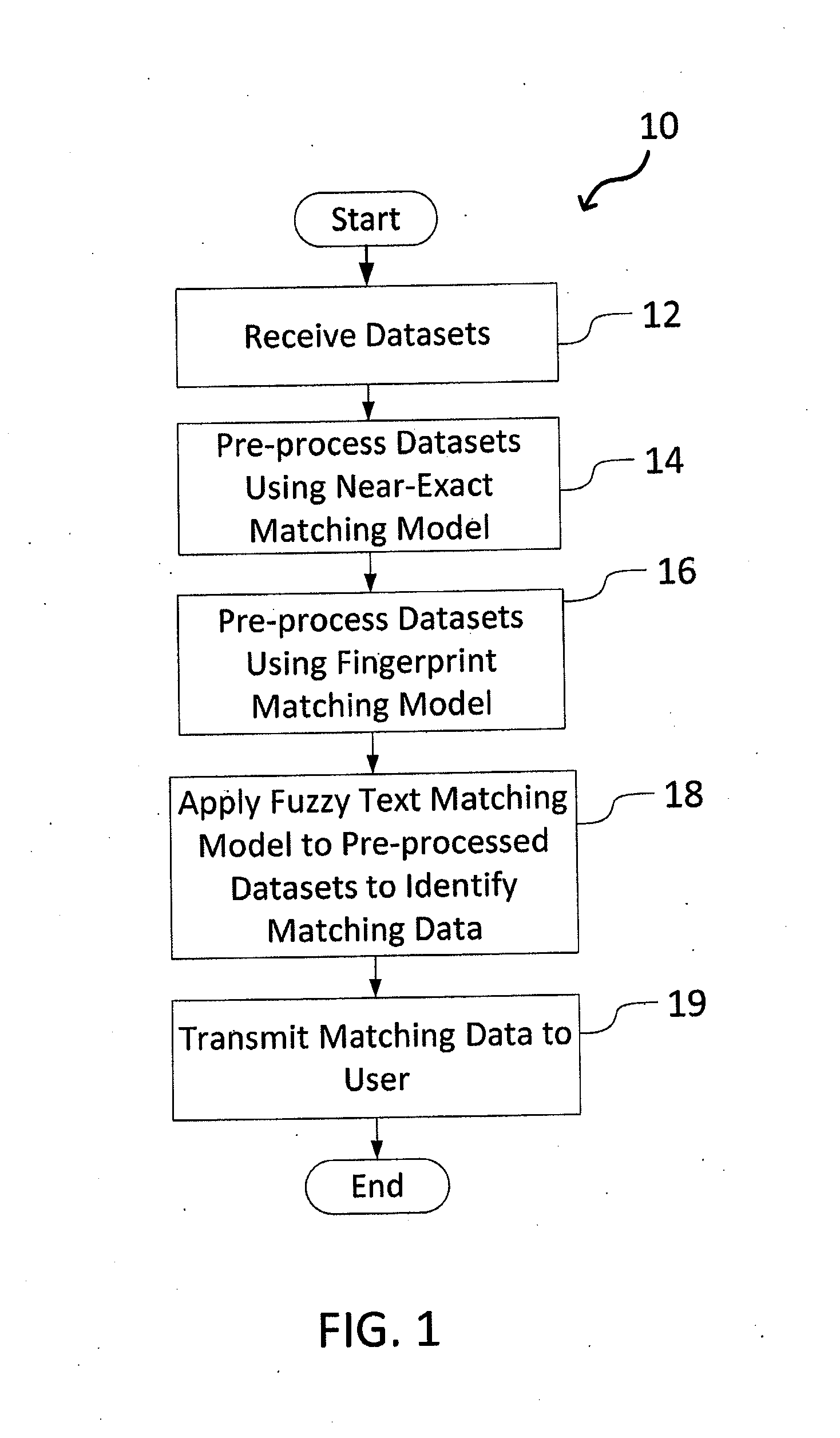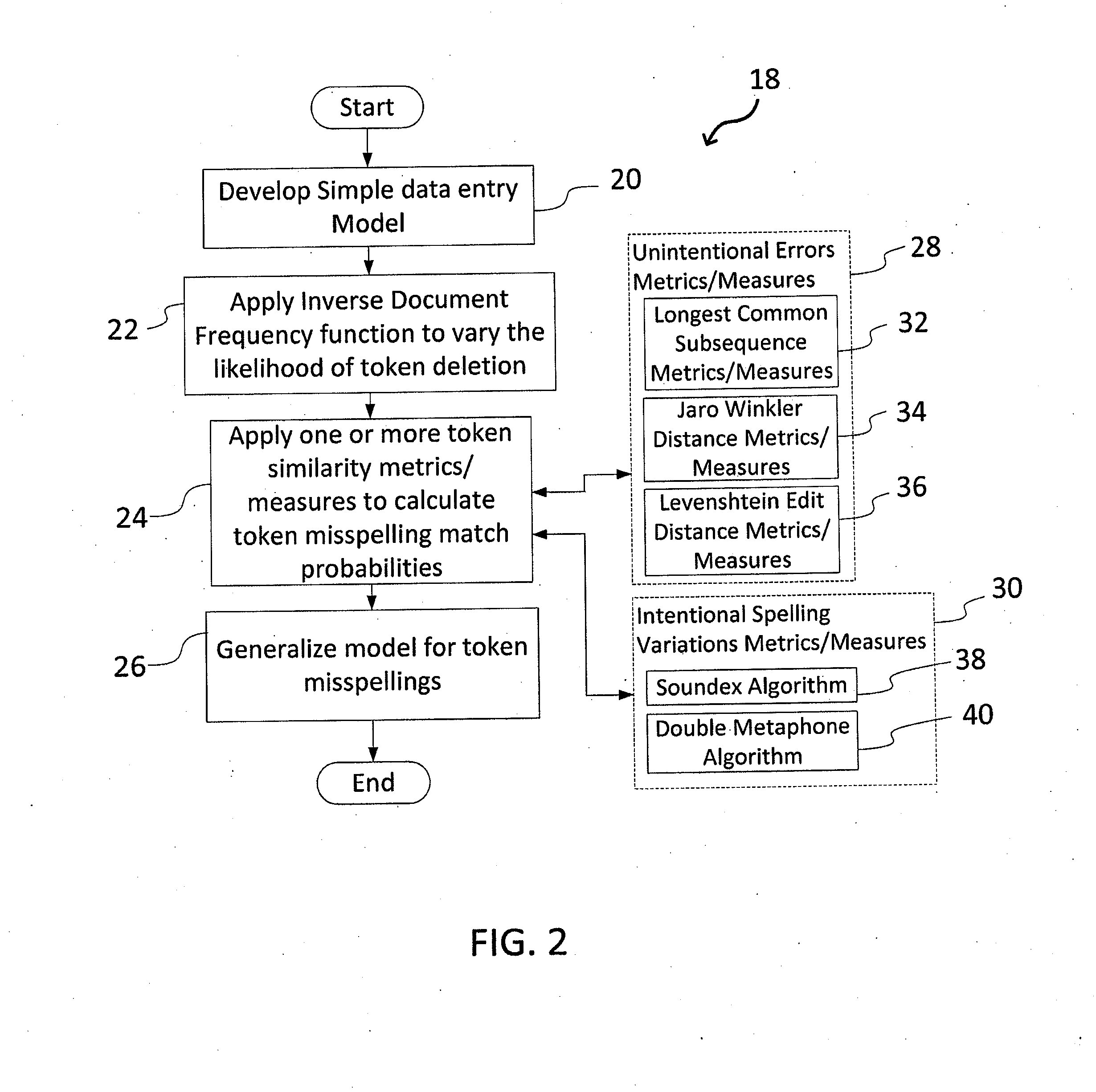System and Method for Matching Data Using Probabilistic Modeling Techniques
a probabilistic modeling and data matching technology, applied in the field of matching data, can solve the problems of inability to link/merge datasets across heterogeneous databases from different sources without, inability to direct merge, and inability to achieve manual matching, etc., and achieve the effect of penalizing the similarity scor
- Summary
- Abstract
- Description
- Claims
- Application Information
AI Technical Summary
Benefits of technology
Problems solved by technology
Method used
Image
Examples
Embodiment Construction
[0016]The present invention relates to a system and method for matching data using probabilistic modeling techniques, as discussed in detail below in connection with FIGS. 1-6.
[0017]FIG. 1 is a flowchart depicting overall processing steps 10 of the system of the present invention. Starting in step 12, the system receives datasets, usually from independent sources, that require combination (e.g., by linking data sources through a column containing manually entered data) or identification of matching data that may exist in the independent datasets. In step 14, the data is pre-processed by applying a “near-exact” matching model. In this step, all non alpha-numeric characters (e.g., punctuation, whitespaces, etc.) are removed, every remaining character is set to lower case, and the resultant strings are directly compared.
[0018]Proceeding to step 16, pre-processing continues with application of a fingerprint matching model to the data processed by the “near-exact” matching model. Fingerp...
PUM
 Login to View More
Login to View More Abstract
Description
Claims
Application Information
 Login to View More
Login to View More - R&D
- Intellectual Property
- Life Sciences
- Materials
- Tech Scout
- Unparalleled Data Quality
- Higher Quality Content
- 60% Fewer Hallucinations
Browse by: Latest US Patents, China's latest patents, Technical Efficacy Thesaurus, Application Domain, Technology Topic, Popular Technical Reports.
© 2025 PatSnap. All rights reserved.Legal|Privacy policy|Modern Slavery Act Transparency Statement|Sitemap|About US| Contact US: help@patsnap.com



